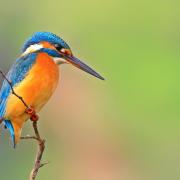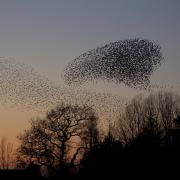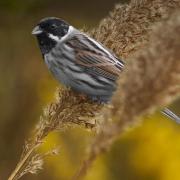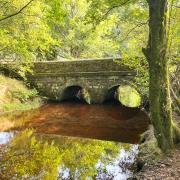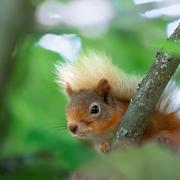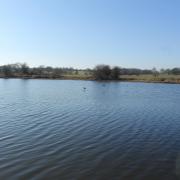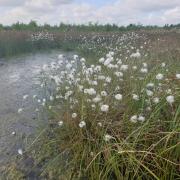In the latest of our series, Nature Moments, one of Lancashire’s top wildlife photographers Peter Smith tells how he spent the summer attracting one of our most elusive birds, the swift.

A couple of years ago it was brought to my attention by a friend that it was possible to attract swifts to nest boxes to breed. It was with this limited knowledge that two friends and I decided to have a go.
During the winter months I made us two boxes each – being a retired joiner helped, I suppose – but anyone with a few tools and woodworking skills could easily make their own.
There are various designs available but the most important criteria is the size of the entrance hole and its placement in the box. The other factor which speeds up the rate at which the swift discover the boxes is to play a tape of swift calls placed by the boxes. This was left to one of us to sort out. In due course, we all had a speaker connected to a digibox playing a pre-recorded card with swift calls on it.
We had all winter to play around with the boxes and equipment as swifts are one of the last summer migrants to arrive in the UK. I have been studying and photographing British wildlife for over 50 years so I have a fair knowledge of swift behaviour and nesting requirements.

They always nest in inaccessible locations, such as under eaves, in broken vents or under roof tiles, making observation rather difficult.
The swifts in the Preston area, where I live, are usually first seen around the May 8 or 12, and have flown around our back field all summer for many years so I felt I had a fair chance of getting them to find my boxes. It was with this in mind that the nest boxes were erected on our respective houses at the beginning of May.
When the first swifts were observed last year flying around our neighbourhood I switched my recording on and within an hour a pair was showing interest by flying up to the boxes but not touching them, let alone getting inside them. I only played the recording for a few minutes each morning and evening and after about a week the swifts gave up showing any interest and I could only presume they had gone down to nest in their traditional sites. Swifts are site faithful, returning to the same cavity year upon year.
However, I did the same thing this year and the birds started to land on the entrance to one of the boxes but did not enter. To my surprise, on the evening of May 15 I saw a bird go in and stay in.

I carefully checked the box after seeing a swift leave on the evening of June 2 and discovered two white eggs. As swifts only lay two eggs they had obviously started incubation so I couldn’t be sure when they would hatch. The nest material was very flimsy, consisting of a few wisps of grass and about four white feathers.
Over the next couple of weeks I saw the off-duty bird, probably the male, entering the box every few hours. I’m not sure if he was feeding the female or it was a nest change-over.
On the June 10 I inspected the box and there were two small chicks, probably a week old, blind and naked. By sitting in the garden when I had a bit of spare time – glass of red in hand – I saw the male coming in to feed the chicks while the female brooded for the next two weeks.
It was during the fourth week that I noticed both birds feeding. I checked the box on July 8 when both adults were absent. The chicks were about four weeks old and covered in quills but to my surprise had still not opened their eyes.

The adults fed the chicks about every half hour to an hour, not often when compared to swallows, house martins and sand martins which feed their young every few minutes. The adult swifts fill their crops with flying insects before coming in to feed the chicks by regurgitation, taking an average of three minutes in the box for each feed.
It is often reported that swifts never land – sleeping, feeding, drinking and even mating – on the wing but my pair entered the nest box each evening at dusk and stayed in until first light.
During their sixth week in the nest box the young appeared at the entrance hole, looking for the adults and wanting to be fed.
Sometime during their eighth week in the box, the young left us, around August 10, never to return. No swifts were seen in the area after then so they were presumably on their way to their wintering grounds in Africa. I wish them well on their journey and can only wait patiently for their return next spring.
Peter Smith, a retired teacher, has had a long term love of nature since he was a child. He collected caterpillars, noting their food plants, then developing an interest in birds, encouraged by an uncle. He said: ‘We would spend most weekends looking for birds’ nests - not collecting eggs even though it was a pastime in the 50s. In my late teens I tried to photograph all the nests we found which led me to the present digital age and running my own wildlife photographic workshops with a colleague, North West Wild Images.’
Peter is also chairman of a local nature conservation group in Penwortham, “PENCON”. He has two children and five grandchildren.












